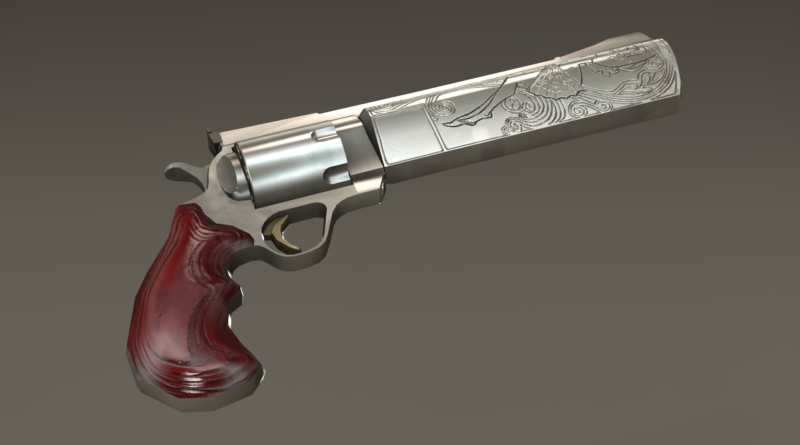Satisfactory Shooting: The Beginning
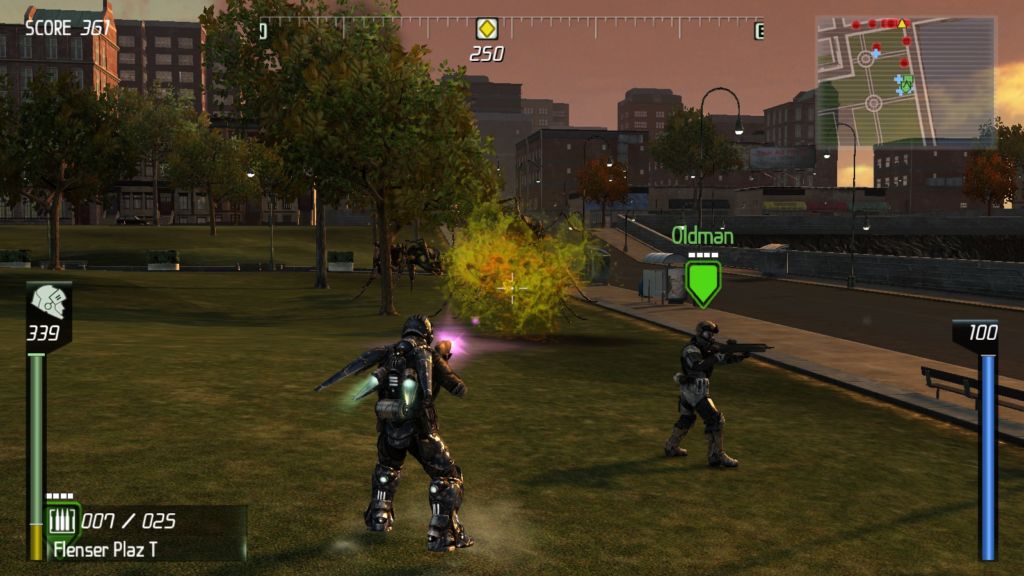
I was playing EDF: Insect Armageddon when this struck me: I really hate the Jet armour’s starting weapons. One of the energy rifles literally makes “pew pew pew” noises and they felt as impactful as throwing tofu at a tank. Less, in fact. At least the tofu will splatter in a rather interesting way.
At first, I chalk that down to them being energy weapons. Conventional gunpowder-based firearms in games always feel good with the recoil, muzzle flares and the very loud “BANG!” each time you fire a shot. But then I remembered that the Cow Mangler 5000 is a rather satisfying gun to shoot, so I chucked that idea out of the window. And that got me thinking again. What is the best way to design a satisfactory shooting experience?
Before this, I would like to thank Yahtzee’s article on the topic. It was, and still is, very informative on the subject, and it got me to notice the little details that create a great shooting experience.

First, let’s start with the gun. Going back to the CM5K, I said it is really satisfying to shoot it. And the best part about using that thing is the alt-fire charge shot.
When you initiate a charge shot, the rocket launcher draws back, and begins to visibly tremble in the Soldier’s hands. A growing ball of energy appears at the front of the Cow Mangler, a mass of cackling electricity and light. And the Mangler emits a noise, starting with a faint fizzle and turning into a loud sizzling noise by your ear just before the energy was launched as a large spinning projectile with a “POW” sound.
https://www.youtube.com/watch?v=EY_2LE_VCOs&ab_channel=OfficialTF2Wiki
The buildup, in both the visual and audio aspects, implies to the user, almost subconsciously, that the resulting shot is going to be pack a real punch as the CM5K drains all your ammo, concentrating all those power for that one powerful shot. And the large spiraling projectile that was launched out of the CM5K certainly doesn’t disappoint. All the details I mentioned in the previous paragraph are what that leads to this effect.
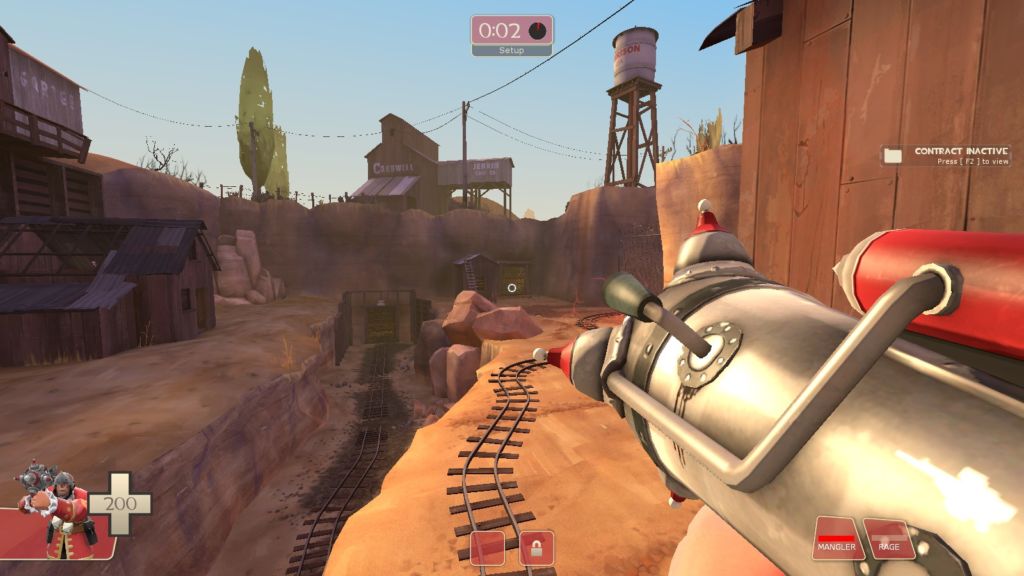
The details in both the visual and audio aspect is what makes guns in video games so fun to shoot. Every shot should feel like they have an effect. And this needs to be repeated. In all caps. And in bold and underlined. And made it as visible as possible.
EVERY SHOT SHOULD FEEL LIKE THEY HAVE AN EFFECT
The guns should have visible recoil. This applies even for energy weapons. A laser cannon may deal 999,999 damage per second and cut through a whole swarm of enemies with a single sweep, but if the player is holding and firing it like he’s pointing a flashlight ahead of him the impact will be lost. This applies more for first person games than third person games, sidescrollers or games with a top-down/isometric view, but showing visible recoil, even if the effect is mild, does a lot to make the guns feel powerful.
Aside from recoil, muzzle flares are great in showing that a lot of energy is released from that one shot. A visual representation of the shot, even as small as a fast moving white speck that moves from the muzzle to the target should be present. That last point applies even if the gun is hitscan, as it gives an impression that you are sending something fast, potentially lethal and definitely unpleasant to your foe. Projectiles need to feel like they are launched with force and not just leisurely jogging across the air.
Look at my most favourite gun in all of video games for example, the SBC Cannon:
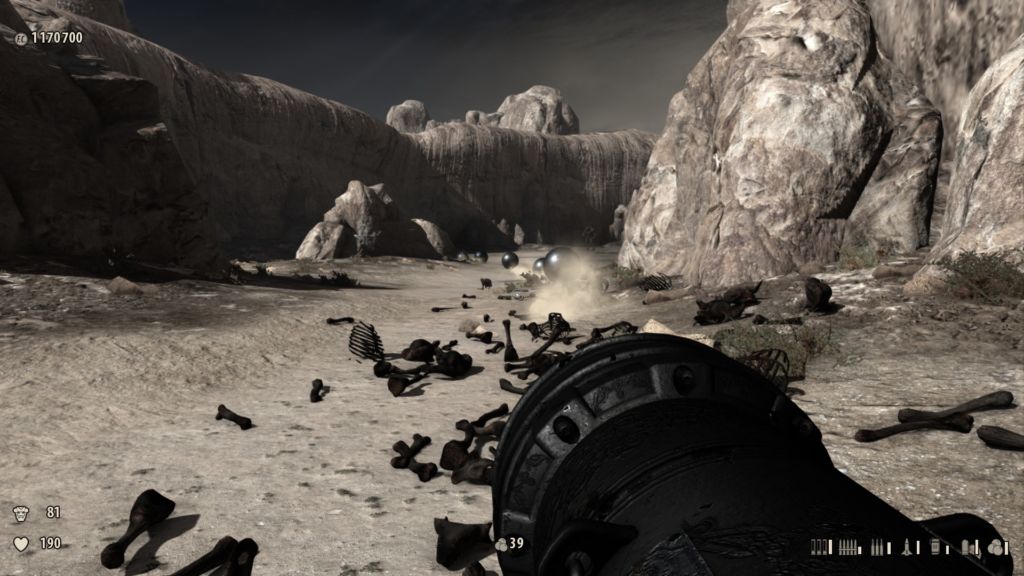
The “boom” every time you fire. The cannon being shoved back into you by the force of launching the giant cannonballs ahead. The cannonballs rolling forward, glistening under the sun as they kicked up billowing clouds of dirt in their wake. They give the impression that the cannonballs are going to plow through everything unfortunate enough to get in front of them, which is exactly what they do.
Another thing that’s important in designing a gun is knowing when you can shoot again. A clear indication prevents a lot of frustration. Just look at the Manmelter for example.
https://www.youtube.com/watch?v=1Njgt7CnQOE&ab_channel=OfficialTF2Wiki
The difference between a Manmelter that is ready to shoot and a Manmelter that’s on cooldown is the presence/absence of the sparks before the gun. When the Manmelter’s cooldown ends, there is a rather soft sound indicating that it’s now ready to fire, as well as some extra sparks. In a firefight where explosives are going of everywhere around you, Miniguns making a ruckus and spraying shots everywhere, and flamethrowers filling my screen with particles, as well as the jeers, yells and screams of the players, there is no way either of them are noticeable. The fact that the gun also gives me zero indication as to when it is going to be ready is just icing on the irritation cake. This just ends up with me rapidly spamming M1 while cursing the damn thing as it plays Schrodinger’s Flares with me.

The other flare guns, however, do not have this problem. After you fire a shot, the Pyro breaks open the barrel and puts a new flare into it, then flipped the barrel back into position. This whole motion of Pyro reloading his flare guns clearly conveys to the player when the flare guns are ready to be used again, and the motion is large and clear enough that it will not be obscured by anything in the field.
Thing is, with a clear reloading animation, what goes on in the player’s head is “Okay, I just shot and now I start reloading. Once I’m done I’m going to shoot his face off.” In the Manmelter’s case, the though is more like “I AM SPAMMING M1 RIGHT NOW SHOOT YOU DAMN BASTARD DON’T YOU DARE IDLE ON ME”. The lack of feedback creates a sense that you do not have full control of your gun since it appears to be doing nothing even with a direct command from you. The reloading animation not only tells the player when he’s ready to shoot and how much longer does he have to wait, it’s also the gun telling the player it’s getting ready for the next command, even when both guns are behaving in the exact same manner, mechanically speaking.
The sharp “clack” as Scout reloads his Pistol, the steady motion of the Heavy as he reloads his Shotgun shell by shell (which, if you’ve been keeping track, also tells you how many shots you now have), or the Spy sliding in six shots at once into the chamber of his Revolver with a speedloader, they all serve an important purpose outside of maintaining realism. They are clear indicators of when you are ready to shoot again, so that you don’t have to guess whether your gun is ready or not. It’s rather annoying to just have your gun do nothing as it waits for a timer to pass, since there is no clear immediate visual or audio feedback informing you on the gun’s status. Using a progress bar adds an additional UI element on the screen, which ends up being another piece of clutter. After all, if the gun is going to be on the screen anyway, why not have the gun itself inform you of its status?
Even in games that do not have reloading, clear indicators for you to know that the next shot is ready should be there, especially if the weapons are single-shot weapons and not semi- or fully-automatic ones. The example I like best for this is the Stake Gun from Painkiller.
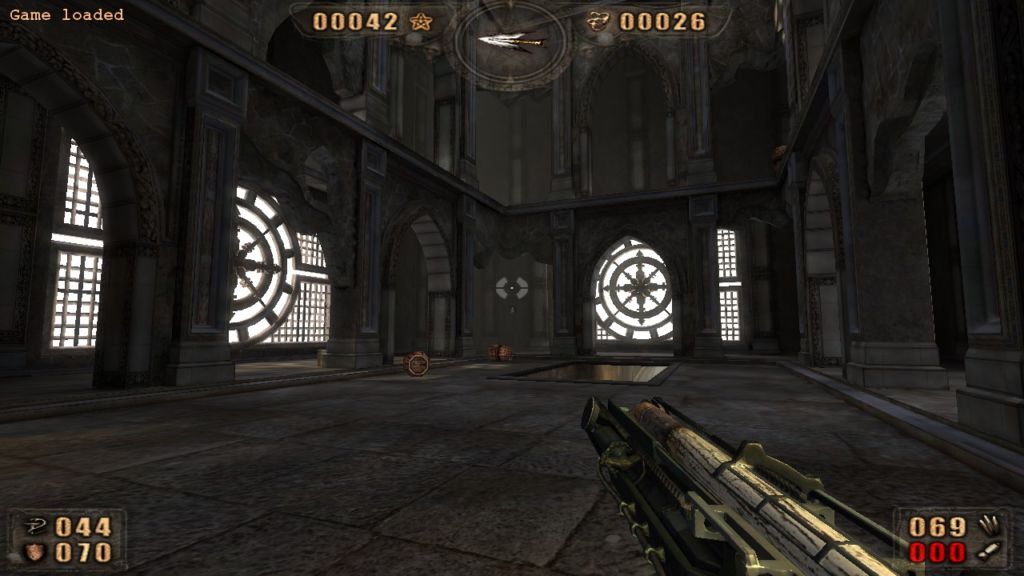
After you send a stake flying across the air with a shrill whistling sound, the metal structure above the stake flips over and reappears with a new stake in it. It then rests the stake in the channel with a clear, wooden “clunk”. Meanwhile, the launching mechanism that shot the first stake and was extended to the front slowly draws itself back, returning to its default position at the same time the Stake Gun is ready to launch a toothpick the size of a tree branch again. It functions like a progress bar on the reloading process without the annoyance of having an actual progress bar on the screen.
Thus, guns need to be designed with care. Aside from their mechanics, balance and appearance, how they behave, animate and sound is also important in creating player satisfaction. Of course, the effects of the shots are also important in making shooting satisfying as well, which is what we’ll be talking about in the next article.
Before I close off this article, I want to raise one exception to this rule. Starter weapons can be depicted as puny and weak to convey that they are awful, as a indirect way to tell the players that they can get much better guns than these. This rule also applies for TF2’s Jumper weapons since they really, really suck.
